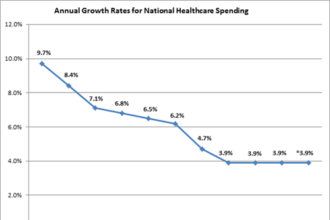In light of the recent election and the number of monumental decisions elected officials, government agencies, policymakers and health care providers have to make around health care reform, the Medicare program hasn’t been receiving much attention. However, given the sheer number of Americans covered by the program and the fiscal disaster looming for aging citizens, it is important to examine the state of the country’s care for the elderly and disabled.
In light of the recent election and the number of monumental decisions elected officials, government agencies, policymakers and health care providers have to make around health care reform, the Medicare program hasn’t been receiving much attention. However, given the sheer number of Americans covered by the program and the fiscal disaster looming for aging citizens, it is important to examine the state of the country’s care for the elderly and disabled.
In the United States, older women rely on the Medicare program disproportionality and significantly more than men. Not only do women make up more than half of the Medicare beneficiaries, they comprise about 70 percent of the oldest (over 85 years old) beneficiaries and are more likely to have multiple chronic conditions as they age. In 2010, the program, which is administered by the Centers for Medicare & Medicaid Services (CMS), covered 47 million elderly (age 65 and over) and disabled beneficiaries. Unfortunately for beneficiaries, the US Government Accountability Office (GAO) has designated Medicare a high-risk program due to its fiscally unsustainable path.
Because women have a greater likelihood of living longer than men, more health care conditions will accumulate and more health care costs accrue. This means that as women age increased cost sharing and out-of-pocket expenses directly impact them more. Therefore, given the importance of Medicare’s cost sharing with seniors, and its quickly dwindling resources, it is important to revisit how vital the program is to the elderly, especially older women.
Facts about older women on Medicare:
- In 2010, the average American woman over the age of 65 had an annual income of less than $15,072 (compared to male counterparts at $25,704)
- Women over the age of 80 made up 62% of all individuals with Medicare in 2010
- In 2011, older women paid an average of $115 for the Medicare Part B premium, plus deductibles that range from $162 to $1132 before their benefits kicked in
- In 2007, the average American women spent an estimated 18.7 percent of her income on out-of-pocket health care costs, with percentages increasing throughout the recession
- Nationally, 49% of women with Medicare report having three or more chronic conditions (compared to just 38% of men)
- Despite cost sharing measures, Medicare does not cover many common and costly health care needs such as eyeglasses, hearing aids and long-term care
Current approaches to prolonging the Medicare program include:
- Capping provider, hospital, devise and pharmaceutical reimbursement payments at 2012 levels
- Reducing Medicare reimbursement rates for health care providers to previous levels
- Raising the age of Medicare eligibility progressively from 65 to 67, or even higher, as people are living and working longer
- Replace Medicare as it currently functions with a Voucher system (also known as a Premium Support Model)
- Restructuring beneficiaries cost-sharing





